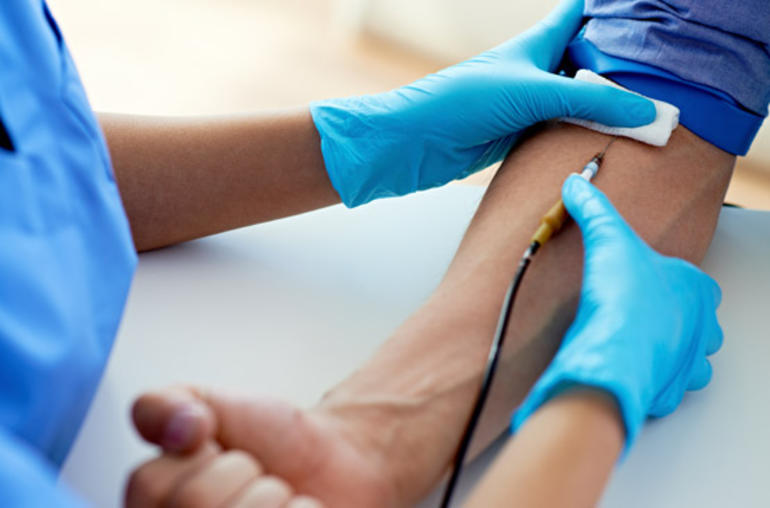 Venipuncture, also spelled, venopuncture, or venepuncture, is a process to gain intravenous access to a particular vein for the purpose of blood sampling, or blood treatment. It is most likely performed by one of the following persons: EMT (emergency medical technicians), paramedics, phlebotomists, or dialysis technicians. Other members of the nursing staff can also perform venipunctue, as most have been trained or certified in phlebotomy prior to starting their nursing careers. Among procedures performed in doctors offices or hospitals, venipuncture is the most commonly performed. There are several main reasons for venipuncture to be performed:
Venipuncture, also spelled, venopuncture, or venepuncture, is a process to gain intravenous access to a particular vein for the purpose of blood sampling, or blood treatment. It is most likely performed by one of the following persons: EMT (emergency medical technicians), paramedics, phlebotomists, or dialysis technicians. Other members of the nursing staff can also perform venipunctue, as most have been trained or certified in phlebotomy prior to starting their nursing careers. Among procedures performed in doctors offices or hospitals, venipuncture is the most commonly performed. There are several main reasons for venipuncture to be performed:
- Obtain a blood sample for diagnostics
- Collect blood from patients to analyze and later use in blood transfusions
- To administer intravenous treatments, such as chemotherapy, nutrition, and other medicines
- Monitor levels of blood components
- To Remove excess blood from the body due to high levels of red blood cells or iron
Methods for Venipuncture
Taking blood from a vein can be performed many ways. The most common way is by evacuated tube system. The two most common types of vacuum tubes are the Vacutainer, and the Vacuette. These two machines are made up of a plastic hub, a hypodermic needle, and a vacuum tube (obviously).
The best way to perform venipuncture varies from patient to patient and depends on their age, overall health, what tests need to be performed, and what equipment is available at the current facility. It should be noted that there are certain situations and conditions where only a needle and syringe can be used. When this is the case, usually a butterfly catheter attached to a long or short needle is used. This is typical method for performing venipuncture is less developed cultures than the US. With that said, it is still very common to use a needle and syringe, even in the US, under certain circumstances.
